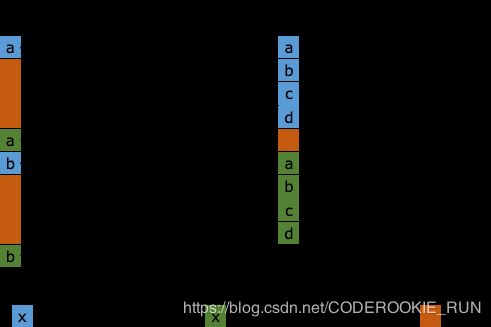- nosql数据库技术与应用知识点
皆过客,揽星河
NoSQLnosql数据库大数据数据分析数据结构非关系型数据库
Nosql知识回顾大数据处理流程数据采集(flume、爬虫、传感器)数据存储(本门课程NoSQL所处的阶段)Hdfs、MongoDB、HBase等数据清洗(入仓)Hive等数据处理、分析(Spark、Flink等)数据可视化数据挖掘、机器学习应用(Python、SparkMLlib等)大数据时代存储的挑战(三高)高并发(同一时间很多人访问)高扩展(要求随时根据需求扩展存储)高效率(要求读写速度快)
- 全面指南:用户行为从前端数据采集到实时处理的最佳实践
数字沉思
营销流量运营系统架构前端内容运营大数据
引言在当今的数据驱动世界,实时数据采集和处理已经成为企业做出及时决策的重要手段。本文将详细介绍如何通过前端JavaScript代码采集用户行为数据、利用API和Kafka进行数据传输、通过Flink实时处理数据的完整流程。无论你是想提升产品体验还是做用户行为分析,这篇文章都将为你提供全面的解决方案。设计一个通用的ClickHouse表来存储用户事件时,需要考虑多种因素,包括事件类型、时间戳、用户信
- 详解 Flink 的常见部署方式
文刀小桂
Flinkflink大数据
一、常见部署模式分类1.按是否依赖外部资源调度1.1Standalone模式独立模式(Standalone)是独立运行的,不依赖任何外部的资源管理平台,只需要运行所有Flink组件服务1.2Yarn模式Yarn模式是指客户端把Flink应用提交给Yarn的ResourceManager,Yarn的ResourceManager会在Yarn的NodeManager上创建容器。在这些容器上,Flink
- 大数据之flink与hive
星辰_mya
大数据flinkhive
其实吧我不太想写flink,因为线上经验确实不多,这也是我需要补的地方,没有条件创造条件,先来一篇吧flink:高性能低延迟流批一体的分布式计算框架基于事件时间对实时数据精准处理快速响应支持批处理,高效离线分析和数据挖掘数据仓库的引擎丰富数据源/接收器,集成多种数据存储格式和源,比较常见就是咱们今天的主题hive了checkpoint恢复机制,故障恢复快速恢复计算任务分布式弹性扩展,据业务灵活增加
- Java中的大数据处理框架对比分析
省赚客app开发者
java开发语言
Java中的大数据处理框架对比分析大家好,我是微赚淘客系统3.0的小编,是个冬天不穿秋裤,天冷也要风度的程序猿!今天,我们将深入探讨Java中常用的大数据处理框架,并对它们进行对比分析。大数据处理框架是现代数据驱动应用的核心,它们帮助企业处理和分析海量数据,以提取有价值的信息。本文将重点介绍ApacheHadoop、ApacheSpark、ApacheFlink和ApacheStorm这四种流行的
- 一文搞懂 Flink Task 数据交互之数据写源码
mn_kw
flink交互java
一文搞懂FlinkTask数据交互之数据写源码1.RecordWriterOutput2.RecordWriter3.数据分区器ChannelSelector4.数据输出模型ResultPartition5.子模型ResultSubpartition6.本地buffer池LocalBufferPool7.获取buffer8.将buffer添加到ResultSubpartitionFlink重要源码
- 概率图模型(PGM)综述
医学影像处理
概率图模型概率图模型综述
RefLink:http://www.sigvc.org/bbs/thread-728-1-1.htmlGraphicalModel的基本类型基本的GraphicalModel可以大致分为两个类别:贝叶斯网络(BayesianNetwork)和马尔可夫随机场(MarkovRandomField)。它们的主要区别在于采用不同类型的图来表达变量之间的关系:贝叶斯网络采用有向无环图(DirectedAc
- Python基础知识进阶之正则表达式_头歌python正则表达式进阶
前端陈萨龙
程序员python学习面试
最后硬核资料:关注即可领取PPT模板、简历模板、行业经典书籍PDF。技术互助:技术群大佬指点迷津,你的问题可能不是问题,求资源在群里喊一声。面试题库:由技术群里的小伙伴们共同投稿,热乎的大厂面试真题,持续更新中。知识体系:含编程语言、算法、大数据生态圈组件(Mysql、Hive、Spark、Flink)、数据仓库、Python、前端等等。网上学习资料一大堆,但如果学到的知识不成体系,遇到问题时只是
- 大数据新视界 --大数据大厂之Flink强势崛起:大数据新视界的璀璨明珠
青云交
大数据新视界Flink大数据数据类型实时处理流处理框架对比应用场景数据处理大数据新视界数据库
亲爱的朋友们,热烈欢迎你们来到青云交的博客!能与你们在此邂逅,我满心欢喜,深感无比荣幸。在这个瞬息万变的时代,我们每个人都在苦苦追寻一处能让心灵安然栖息的港湾。而我的博客,正是这样一个温暖美好的所在。在这里,你们不仅能够收获既富有趣味又极为实用的内容知识,还可以毫无拘束地畅所欲言,尽情分享自己独特的见解。我真诚地期待着你们的到来,愿我们能在这片小小的天地里共同成长,共同进步。本博客的精华专栏:Ja
- flink增量检查点降低状态依赖实现的详细步骤
goTsHgo
Flink大数据分布式flink大数据
增量检查点启动恢复的时间是很久的,业务上不能接受,所以可以通过降低状态依赖来减少恢复的时间。降低状态依赖尽可能减少状态的复杂性和依赖关系,通过拆分状态或将状态外部化到其他服务中,从而降低恢复的开销。实施措施:将状态分割为更小的单元,减少每次恢复的状态量。使用外部状态存储服务,减少Flink状态后端的负担。拆分状态和将状态外部化到其他服务可以帮助减少作业的状态依赖,从而降低恢复时间和复杂度。以下是详
- flink table factory基础知识
loukey_j
一、概述在flink中很多组件都是TableFactory的子类。比如序列化,反序列化,tableSinkFactory,tableSourceFactory.TableFactory是用来创建序列化,反序列器,tableSource和tableSink的工厂。二、TableFactory源码在flink框架中,TableFactory的子类并不是程序员自己随心new出来的。flink的提供给程序
- 2024年最全使用Python求解方程_python解方程(1),字节面试官迟到
2401_84569545
程序员python学习面试
最后硬核资料:关注即可领取PPT模板、简历模板、行业经典书籍PDF。技术互助:技术群大佬指点迷津,你的问题可能不是问题,求资源在群里喊一声。面试题库:由技术群里的小伙伴们共同投稿,热乎的大厂面试真题,持续更新中。知识体系:含编程语言、算法、大数据生态圈组件(Mysql、Hive、Spark、Flink)、数据仓库、Python、前端等等。网上学习资料一大堆,但如果学到的知识不成体系,遇到问题时只是
- 01-Flink安装部署及入门案例(仅供学习),音视频时代你还不会NDK开发
小猪佩琪962
2024年程序员学习flink学习大数据
先自我介绍一下,小编浙江大学毕业,去过华为、字节跳动等大厂,目前阿里P7深知大多数程序员,想要提升技能,往往是自己摸索成长,但自己不成体系的自学效果低效又漫长,而且极易碰到天花板技术停滞不前!因此收集整理了一份《2024年最新大数据全套学习资料》,初衷也很简单,就是希望能够帮助到想自学提升又不知道该从何学起的朋友。既有适合小白学习的零基础资料,也有适合3年以上经验的小伙伴深入学习提升的进阶课程,涵
- 比较Spark与Flink
傲雪凌霜,松柏长青
大数据后端sparkflink大数据
ApacheSpark和ApacheFlink都是目前非常流行的大数据处理引擎,但它们在架构、处理模式、应用场景等方面有一些显著的区别。下面是二者的对比:1.处理模式Spark:主要支持批处理(BatchProcessing),也能通过SparkStreaming处理流式数据,但SparkStreaming本质上是通过微批(micro-batching)的方式处理流数据,延迟相对较高。SparkS
- Apache Flink:实时流处理与批处理的统一框架
小码快撩
flink大数据
导语在大数据处理领域,流处理和批处理是两种主要的处理方式。然而,传统的系统通常将这两者视为独立的任务,需要不同的工具和框架来处理。ApacheFlink是一个开源的流处理框架,它打破了这种界限,提供了一个统一的平台来处理实时流数据和批处理数据。一、基本概念与架构ApacheFlink的基本概念与架构主要包括以下几个核心组成部分:基本概念1.流处理模型:无界流(UnboundedStreams):数
- flink独立集群部署
嘎子吱吱吱吱
flinkhadooplinux
#flink独立集群部署说明安装环境三台服务器47.106.23.1(master)47.112.173.2(worker1)47.115.162.3(worker1)提前装好jdk和ssh,以下操作最好不要用root账号提前下载好flink的包并解压设置三台服务器之间ssh免密登录生成本机秘钥以47.106.23.1为例(其他两台参考本服务器)#生成本机秘钥cd;ssh-keygen-trsa-
- Flink的时间与watermarks详解
大数据技术与数仓
当我们在使用Flink的时候,避免不了要和时间(time)、水位线(watermarks)打交道,理解这些概念是开发分布式流处理应用的基础。那么Flink支持哪些时间语义?Flink是如何处理乱序事件的?什么是水位线?水位线是如何生成的?水位线的传播方式是什么?让我们带着这些问题来开始本文的内容。时间语义基本概念时间是Flink等流处理中最重要的概念之一,在Flink中Time可以分为三种:Eve
- 实时数仓之实时数仓架构(Hudi)(1)
2401_84164527
程序员架构
目前比较流行的实时数仓架构有两类,其中一类是以Flink+Doris为核心的实时数仓架构方案;另一类是以湖仓一体架构为核心的实时数仓架构方案。本文针对Flink+Hudi湖仓一体架构进行介绍,这套架构的特点是可以基于一套数据完全实现Lambda架构。实时数仓架构图如下:技术框架Kafka:用于接入数据源;FlinkCDC:如果直接接入业务数据源可以考虑CDC方式,如果通过Kafka缓冲接入业务数据
- 2024年大数据最新实时数仓之实时数仓架构(Hudi)
2401_84185556
程序员大数据架构
技术框架Kafka:用于接入数据源;FlinkCDC:如果直接接入业务数据源可以考虑CDC方式,如果通过Kafka缓冲接入业务数据可以忽略;Flink:用于数据ETL,包括接入数据、处理数据及输出数据全链路数据计算任务;Spark:用于数据ETL,包括处理数据及输出数据全链路数据计算任务;Hudi:湖仓一体数据管理框架,用来管理模型数据,包括ODS/DWD/DWS/DIM/ADS等;Doris:O
- 实时数仓之实时数仓架构(Hudi)(1),2024年最新熬夜整理华为最新大数据开发笔试题
2401_84181221
程序员架构大数据
+Hudi:湖仓一体数据管理框架,用来管理模型数据,包括ODS/DWD/DWS/DIM/ADS等;+Doris:OLAP引擎,同步数仓结果模型,对外提供数据服务支持;+Hbase:用来存储维表信息,维表数据来源一部分有Flink加工实时写入,另一部分是从Spark任务生产,其主要作用用来支持FlinkETL处理过程中的LookupJoin功能。这里选用Hbase原因主要因为Table的HbaseC
- Flink - CEP
kikiki1
Hadoop3.2集群新版本的搭建详细讲解过程,从下面第一张官方的图来看,最新版是3.2,所以大猪将使用3.2的版本来演示,过程中遇到的坑留给自己,把路留给你们,IT之路还有大猪。大猪为了把文章压缩极简方便小伙伴阅读,将使用root帐号进行所有操作。准备两台主机10.211.55.11、10.211.55.12对应的hostname为m1.example.com、m2.example.com具体命
- chapter01 Java语言概述 知识点Note
月下绯烟
Javajava开发语言
JavaSEJavaEEJavaME大数据Java基础常用技术栈mysqlJDBCSSMspring+springmvc+mybatisLinuxnacosHadoopFlinkJAVAEE消息队列rabbitMQdocker数据库redisspringbootspringcloudsshstruts+spring+hibernate过时技术栈很少用JAVA虚拟机jvm分布式微服务高并发常见dos
- 【无标题】大数据之批处理,流处理,批流一体概念
数字天下
大数据
批处理批处理是将一定量的数据集合在一起,形成一个数据批次,然后对这个批次中的数据进行处理。Spark和Flink都支持批处理,其中Spark使用的是批处理模型,即将一批数据一次性读入内存,然后对其进行处理,处理完成后再将结果写入磁盘。Flink也支持批处理,但使用的是基于流处理的批处理模式,即将一批数据分成多个数据流进行处理,可以实现更高效的内存管理和更低的延迟。流处理流式处理是一种将数据流式地处
- python flink_《Flink官方文档》Python 编程指南测试版
weixin_39846361
pythonflink
原文链接译者:hjjxd校对:清英Flink中的分析程序实现了对数据集的某些操作(例如,数据过滤,映射,合并,分组)。这些数据最初来源于特定的数据源(例如来自于读文件或数据集合)。操作执行的结果通过数据池以写入数据到(分布式)文件系统或标准输出(例如命令行终端)的形式返回。Flink程序可以运行在不同的环境中,既能够独立运行,也可以嵌入到其他程序中运行。程序可以运行在本地的JVM上,也可以运行在服
- flink---window
搞数据的小杰
flink大数据
Window介绍DataStream:https://nightlies.apache.org/flink/flink-docs-release-1.17/zh/docs/dev/datastream/operators/windows/SQL:https://nightlies.apache.org/flink/flink-docs-release-1.17/zh/docs/dev/table/
- Flink(1.13) 的window机制(一)
万事万物
窗口概述在流处理应用中,数据是连续不断的,因此我们不可能等到所有数据都到了才开始处理。当然我们可以每来一个消息就处理一次,但是有时我们需要做一些聚合类的处理,例如:在过去的1分钟内有多少用户点击了我们的网页。在这种情况下,我们必须定义一个窗口,用来收集最近一分钟内的数据,并对这个窗口内的数据进行计算。流式计算是一种被设计用于处理无限数据集的数据处理引擎,而无限数据集是指一种不断增长的本质上无限的数
- pyflink 自定义函数
scan724
Flink实时计算python开发语言
frompyflink.datastreamimportStreamExecutionEnvironmentfrompyflink.common.typeinfoimportTypesfrompyflink.datastreamimportStreamExecutionEnvironmentfrompyflink.tableimportStreamTableEnvironmentfrompyfli
- flink 问题记录
Jhon_yh
flinkflinkhadoop大数据
文章目录1.Causedby:java.lang.UnsatisfiedLinkError:org.apache.hadoop.util.NativeCrc32.nativeComputeChunkedSums(IILjava/nio/ByteBuffer;ILjava/nio/ByteBuffer;IILjava/lang/String;JZ)V原因java.util.concurrent.Ex
- Pyflink教程(三):自定义函数
yuxj记录学习
学习笔记学习pyflink
该文章例子pyflink环境是apache-flink==1.13.6Python自定义函数是PyFlinkTableAPI中最重要的功能之一,其允许用户在PyFlinkTableAPI中使用Python语言开发的自定义函数,极大地拓宽了PythonTableAPI的使用范围。简单来说就是有的业务逻辑和需求是sql语句满足不了或太麻烦的,需要用过函数来实现。PythonUDFPythonUDF,即
- pyflink 滚动窗口实例
菜鸟社长
菜鸟的大数据进阶之路大数据进阶之路kafkabigdatapythonflink
写在前头:更多大数据相关精彩内容请进我的知识星球,每周定期更新正篇技术路线:模拟kafka生产者发送数据——>flink对kafka数据实时计算处理——>处理后的数据发送到kafka1、模拟客流数据的生产者,参考https://blog.csdn.net/qq_22611181/article/details/1199002502、flink聚合操作原理介绍,参考https://blog.csdn
- jdk tomcat 环境变量配置
Array_06
javajdktomcat
Win7 下如何配置java环境变量
1。准备jdk包,win7系统,tomcat安装包(均上网下载即可)
2。进行对jdk的安装,尽量为默认路径(但要记住啊!!以防以后配置用。。。)
3。分别配置高级环境变量。
电脑-->右击属性-->高级环境变量-->环境变量。
分别配置 :
path
&nbs
- Spring调SDK包报java.lang.NoSuchFieldError错误
bijian1013
javaspring
在工作中调另一个系统的SDK包,出现如下java.lang.NoSuchFieldError错误。
org.springframework.web.util.NestedServletException: Handler processing failed; nested exception is java.l
- LeetCode[位运算] - #136 数组中的单一数
Cwind
java题解位运算LeetCodeAlgorithm
原题链接:#136 Single Number
要求:
给定一个整型数组,其中除了一个元素之外,每个元素都出现两次。找出这个元素
注意:算法的时间复杂度应为O(n),最好不使用额外的内存空间
难度:中等
分析:
题目限定了线性的时间复杂度,同时不使用额外的空间,即要求只遍历数组一遍得出结果。由于异或运算 n XOR n = 0, n XOR 0 = n,故将数组中的每个元素进
- qq登陆界面开发
15700786134
qq
今天我们来开发一个qq登陆界面,首先写一个界面程序,一个界面首先是一个Frame对象,即是一个窗体。然后在这个窗体上放置其他组件。代码如下:
public class First { public void initul(){ jf=ne
- Linux的程序包管理器RPM
被触发
linux
在早期我们使用源代码的方式来安装软件时,都需要先把源程序代码编译成可执行的二进制安装程序,然后进行安装。这就意味着每次安装软件都需要经过预处理-->编译-->汇编-->链接-->生成安装文件--> 安装,这个复杂而艰辛的过程。为简化安装步骤,便于广大用户的安装部署程序,程序提供商就在特定的系统上面编译好相关程序的安装文件并进行打包,提供给大家下载,我们只需要根据自己的
- socket通信遇到EOFException
肆无忌惮_
EOFException
java.io.EOFException
at java.io.ObjectInputStream$PeekInputStream.readFully(ObjectInputStream.java:2281)
at java.io.ObjectInputStream$BlockDataInputStream.readShort(ObjectInputStream.java:
- 基于spring的web项目定时操作
知了ing
javaWeb
废话不多说,直接上代码,很简单 配置一下项目启动就行
1,web.xml
<?xml version="1.0" encoding="UTF-8"?>
<web-app xmlns:xsi="http://www.w3.org/2001/XMLSchema-instance"
xmlns="h
- 树形结构的数据库表Schema设计
矮蛋蛋
schema
原文地址:
http://blog.csdn.net/MONKEY_D_MENG/article/details/6647488
程序设计过程中,我们常常用树形结构来表征某些数据的关联关系,如企业上下级部门、栏目结构、商品分类等等,通常而言,这些树状结构需要借助于数据库完成持久化。然而目前的各种基于关系的数据库,都是以二维表的形式记录存储数据信息,
- maven将jar包和源码一起打包到本地仓库
alleni123
maven
http://stackoverflow.com/questions/4031987/how-to-upload-sources-to-local-maven-repository
<project>
...
<build>
<plugins>
<plugin>
<groupI
- java IO操作 与 File 获取文件或文件夹的大小,可读,等属性!!!
百合不是茶
类 File
File是指文件和目录路径名的抽象表示形式。
1,何为文件:
标准文件(txt doc mp3...)
目录文件(文件夹)
虚拟内存文件
2,File类中有可以创建文件的 createNewFile()方法,在创建新文件的时候需要try{} catch(){}因为可能会抛出异常;也有可以判断文件是否是一个标准文件的方法isFile();这些防抖都
- Spring注入有继承关系的类(2)
bijian1013
javaspring
被注入类的父类有相应的属性,Spring可以直接注入相应的属性,如下所例:1.AClass类
package com.bijian.spring.test4;
public class AClass {
private String a;
private String b;
public String getA() {
retu
- 30岁转型期你能否成为成功人士
bijian1013
成长励志
很多人由于年轻时走了弯路,到了30岁一事无成,这样的例子大有人在。但同样也有一些人,整个职业生涯都发展得很优秀,到了30岁已经成为职场的精英阶层。由于做猎头的原因,我们接触很多30岁左右的经理人,发现他们在职业发展道路上往往有很多致命的问题。在30岁之前,他们的职业生涯表现很优秀,但从30岁到40岁这一段,很多人
- 【Velocity四】Velocity与Java互操作
bit1129
velocity
Velocity出现的目的用于简化基于MVC的web应用开发,用于替代JSP标签技术,那么Velocity如何访问Java代码.本篇继续以Velocity三http://bit1129.iteye.com/blog/2106142中的例子为基础,
POJO
package com.tom.servlets;
public
- 【Hive十一】Hive数据倾斜优化
bit1129
hive
什么是Hive数据倾斜问题
操作:join,group by,count distinct
现象:任务进度长时间维持在99%(或100%),查看任务监控页面,发现只有少量(1个或几个)reduce子任务未完成;查看未完成的子任务,可以看到本地读写数据量积累非常大,通常超过10GB可以认定为发生数据倾斜。
原因:key分布不均匀
倾斜度衡量:平均记录数超过50w且
- 在nginx中集成lua脚本:添加自定义Http头,封IP等
ronin47
nginx lua csrf
Lua是一个可以嵌入到Nginx配置文件中的动态脚本语言,从而可以在Nginx请求处理的任何阶段执行各种Lua代码。刚开始我们只是用Lua 把请求路由到后端服务器,但是它对我们架构的作用超出了我们的预期。下面就讲讲我们所做的工作。 强制搜索引擎只索引mixlr.com
Google把子域名当作完全独立的网站,我们不希望爬虫抓取子域名的页面,降低我们的Page rank。
location /{
- java-3.求子数组的最大和
bylijinnan
java
package beautyOfCoding;
public class MaxSubArraySum {
/**
* 3.求子数组的最大和
题目描述:
输入一个整形数组,数组里有正数也有负数。
数组中连续的一个或多个整数组成一个子数组,每个子数组都有一个和。
求所有子数组的和的最大值。要求时间复杂度为O(n)。
例如输入的数组为1, -2, 3, 10, -4,
- Netty源码学习-FileRegion
bylijinnan
javanetty
今天看org.jboss.netty.example.http.file.HttpStaticFileServerHandler.java
可以直接往channel里面写入一个FileRegion对象,而不需要相应的encoder:
//pipeline(没有诸如“FileRegionEncoder”的handler):
public ChannelPipeline ge
- 使用ZeroClipboard解决跨浏览器复制到剪贴板的问题
cngolon
跨浏览器复制到粘贴板Zero Clipboard
Zero Clipboard的实现原理
Zero Clipboard 利用透明的Flash让其漂浮在复制按钮之上,这样其实点击的不是按钮而是 Flash ,这样将需要的内容传入Flash,再通过Flash的复制功能把传入的内容复制到剪贴板。
Zero Clipboard的安装方法
首先需要下载 Zero Clipboard的压缩包,解压后把文件夹中两个文件:ZeroClipboard.js
- 单例模式
cuishikuan
单例模式
第一种(懒汉,线程不安全):
public class Singleton { 2 private static Singleton instance; 3 pri
- spring+websocket的使用
dalan_123
一、spring配置文件
<?xml version="1.0" encoding="UTF-8"?><beans xmlns="http://www.springframework.org/schema/beans" xmlns:xsi="http://www.w3.or
- 细节问题:ZEROFILL的用法范围。
dcj3sjt126com
mysql
1、zerofill把月份中的一位数字比如1,2,3等加前导0
mysql> CREATE TABLE t1 (year YEAR(4), month INT(2) UNSIGNED ZEROFILL, -> day
- Android开发10——Activity的跳转与传值
dcj3sjt126com
Android开发
Activity跳转与传值,主要是通过Intent类,Intent的作用是激活组件和附带数据。
一、Activity跳转
方法一Intent intent = new Intent(A.this, B.class); startActivity(intent)
方法二Intent intent = new Intent();intent.setCla
- jdbc 得到表结构、主键
eksliang
jdbc 得到表结构、主键
转自博客:http://blog.csdn.net/ocean1010/article/details/7266042
假设有个con DatabaseMetaData dbmd = con.getMetaData(); rs = dbmd.getColumns(con.getCatalog(), schema, tableName, null); rs.getSt
- Android 应用程序开关GPS
gqdy365
android
要在应用程序中操作GPS开关需要权限:
<uses-permission android:name="android.permission.WRITE_SECURE_SETTINGS" />
但在配置文件中添加此权限之后会报错,无法再eclipse里面正常编译,怎么办?
1、方法一:将项目放到Android源码中编译;
2、方法二:网上有人说cl
- Windows上调试MapReduce
zhiquanliu
mapreduce
1.下载hadoop2x-eclipse-plugin https://github.com/winghc/hadoop2x-eclipse-plugin.git 把 hadoop2.6.0-eclipse-plugin.jar 放到eclipse plugin 目录中。 2.下载 hadoop2.6_x64_.zip http://dl.iteye.com/topics/download/d2b
- 如何看待一些知名博客推广软文的行为?
justjavac
博客
本文来自我在知乎上的一个回答:http://www.zhihu.com/question/23431810/answer/24588621
互联网上的两种典型心态:
当初求种像条狗,如今撸完嫌人丑
当初搜贴像条犬,如今读完嫌人软
你为啥感觉不舒服呢?
难道非得要作者把自己的劳动成果免费给你用,你才舒服?
就如同 Google 关闭了 Gooled Reader,那是
- sql优化总结
macroli
sql
为了是自己对sql优化有更好的原则性,在这里做一下总结,个人原则如有不对请多多指教。谢谢!
要知道一个简单的sql语句执行效率,就要有查看方式,一遍更好的进行优化。
一、简单的统计语句执行时间
declare @d datetime ---定义一个datetime的变量set @d=getdate() ---获取查询语句开始前的时间select user_id
- Linux Oracle中常遇到的一些问题及命令总结
超声波
oraclelinux
1.linux更改主机名
(1)#hostname oracledb 临时修改主机名
(2) vi /etc/sysconfig/network 修改hostname
(3) vi /etc/hosts 修改IP对应的主机名
2.linux重启oracle实例及监听的各种方法
(注意操作的顺序应该是先监听,后数据库实例)
&nbs
- hive函数大全及使用示例
superlxw1234
hadoophive函数
具体说明及示例参 见附件文档。
文档目录:
目录
一、关系运算: 4
1. 等值比较: = 4
2. 不等值比较: <> 4
3. 小于比较: < 4
4. 小于等于比较: <= 4
5. 大于比较: > 5
6. 大于等于比较: >= 5
7. 空值判断: IS NULL 5
- Spring 4.2新特性-使用@Order调整配置类加载顺序
wiselyman
spring 4
4.1 @Order
Spring 4.2 利用@Order控制配置类的加载顺序
4.2 演示
两个演示bean
package com.wisely.spring4_2.order;
public class Demo1Service {
}
package com.wisely.spring4_2.order;
public class
